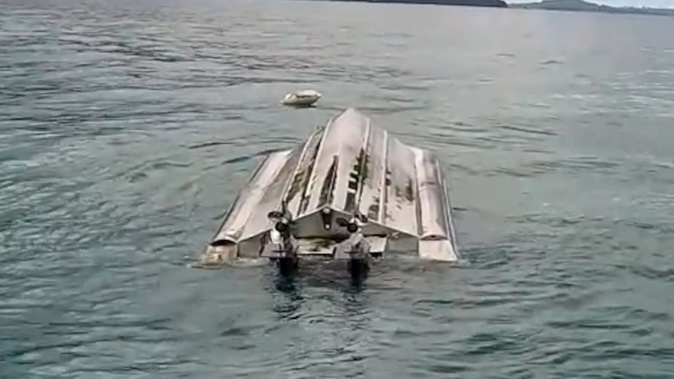
The deaths of five people when a boat capsized off the Kaikōura coast were caused by exposure to petrol fumes while they were trapped under the hull, a coroner has found.
The Nature Photography Society of New Zealand members were two hours into a bird-watching excursion when the boat was hit by a whale and capsized in September 2022. The skipper and five other passengers survived.
On Wednesday, Coroner Alexandra Cunninghame publicly released findings into the deaths of Catherine Margaret Haddock, 65, and Susan Jane Cade, 63, of Lower Hutt, and Diana Ruby Stewart, 68, Peter Charles Hockley, 76, and Maureen Pierre, 75, of Christchurch.
All five were found within the air pocket under the upturned boat. The six survivors were either thrown into open water or managed to swim out from under the hull.
The Transport Accident Investigation Commission (TAIC) had earlier found that the five passengers who died were trapped under the hull and flaws in the vessel’s fuel system, which had not been identified when it was surveyed, allowed fuel to leak into the air pocket.
Forensic pathologist Dr Hannah Elstub determined that the cause of death in each case was the result of petrol toxicity in a confined space.
 The capsized vessel.
The capsized vessel.
Sounds could be heard from under the vessel until around 17 minutes after the capsize. The coroner found exposure to as little as 0.14 litres of petrol in a confined space with the same dimensions as the air pocket under the boat could result in confusion, loss of consciousness and sudden death.
The people who died were wearing inflatable life jackets which might have prevented them from being able to escape from under the upturned vessel and they all showed symptoms of petrol exposure consistent with inhalation and absorption of fumes.
The TAIC made a number of recommendations relating to the maintenance and surveying of fuel lines, the use of inflatable lifejackets and the emergency response.
The capsize highlighted failings in the emergency call system because the skipper had been able to call police, but the TAIC inquiry found the 111 system had caused “unnecessary delays”.
When police tried to give paramedics the accident’s co-ordinates, a second fragmented tech system called CARD would not accept it because the sea was outside usual ambulance range and instead produced an error message.
The TAIC chief commissioner David Clarke said while it was unlikely that any of these issues contributed to the outcome of the tragedy in this case, in other circumstances similar delays could be critical.
“No action has been taken to address this safety issue,” he said.
Maritime New Zealand decided against prosecuting any individuals, organisations or businesses after an investigation into the tragedy.
Cunninghame did not make any further recommendations in her findings.
She said those relating to the emergency response were outside the scope of a coroner’s inquiry, because the TAIC investigation concluded that a swifter response would not have resulted in a different outcome because of the short time frame in which the atmosphere under the vessel was survivable.
- RNZ
Take your Radio, Podcasts and Music with you









